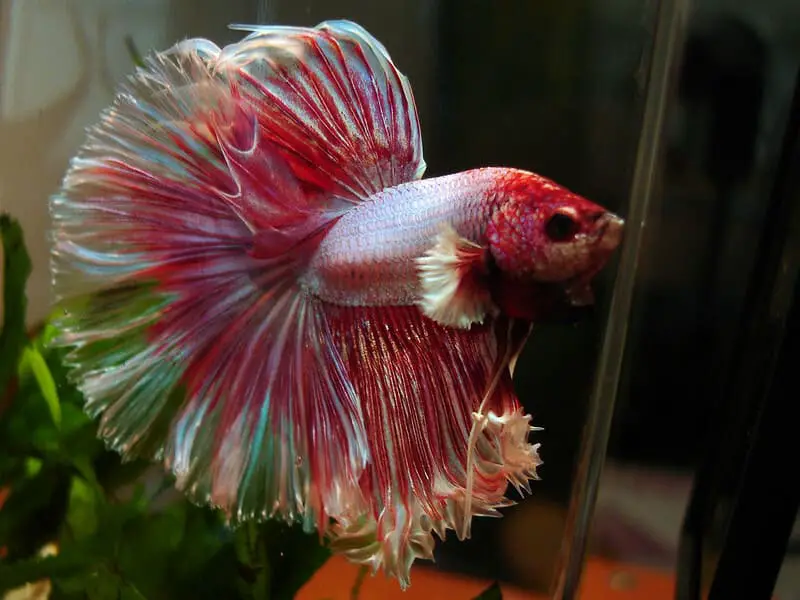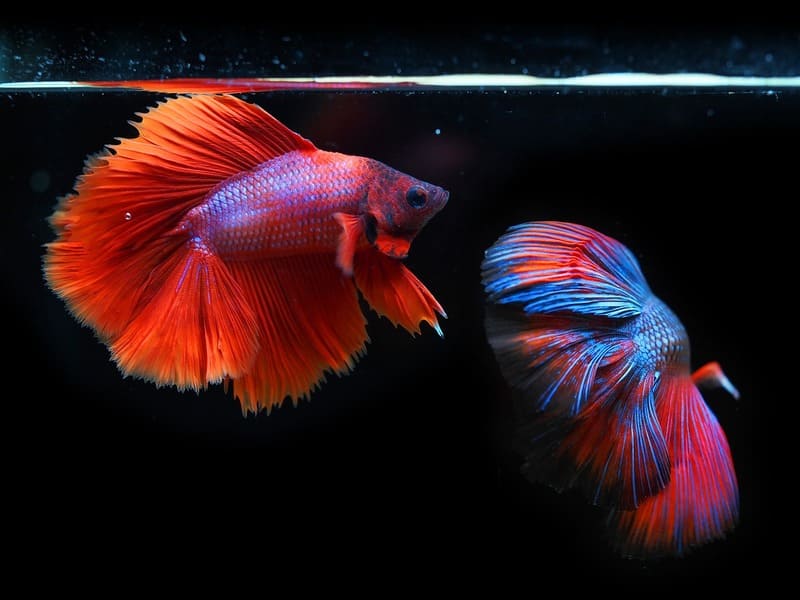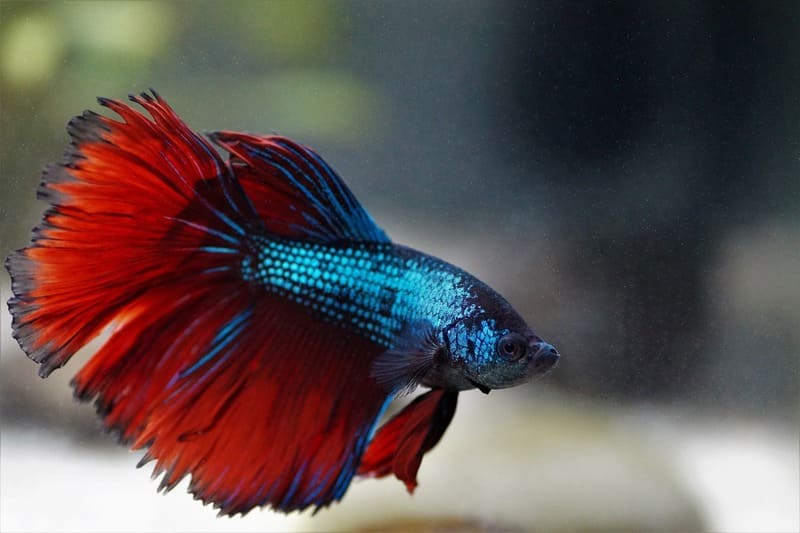Betta fish, also known as Siamese fighting fish, are popular choices for aquarium enthusiasts due to their vibrant colors and captivating personalities. However, a common question that arises among betta fish keepers is whether they can coexist with other fish in the same tank. The answer is not a simple “yes” or “no.” The compatibility of betta fish with other species depends on several factors, including the betta’s temperament, the tank size, and the choice of tank mates.
In this comprehensive guide, we will explore the considerations and steps necessary to successfully keep betta fish with other fish in a shared tank. We’ll discuss suitable tank mates, potential challenges, and provide tips for a harmonious community tank that keeps all its inhabitants healthy and happy.

Understanding Betta Fish Behavior
Before delving into the compatibility of betta fish with other species, it’s essential to understand betta fish behavior. Bettas are known for their territorial nature, and they are often solitary in the wild. In their natural habitat, they establish their territory and may become aggressive toward other bettas, especially males, if they encroach on their space.
Here are some key aspects of betta fish behavior to consider:
- Territorial Aggression: Male bettas, in particular, can be highly territorial and aggressive towards other males. They will engage in battles to defend their territory, often leading to injuries or even death.
- Female Bettas: Female bettas tend to be less aggressive than males, but they can also display territorial behavior, especially when establishing a pecking order among a group of females.
- Solitary Nature: In the wild, bettas are primarily solitary fish. They do not naturally form schools or groups, and they prefer their own space.
- Compatibility Varies: While bettas are generally considered challenging tank mates, their compatibility with other fish depends on individual temperament and proper tank setup.
Suitable Tank Mates for Betta Fish
If you want to keep a betta fish in a community tank, selecting the right tank mates is critical to ensure compatibility and minimize aggression. Here are some types of fish and aquatic creatures that are known to be suitable companions for betta fish:
1. Peaceful Community Fish:
- Tetras: Small and peaceful tetras like Neon Tetras, Harlequin Rasboras, and Ember Tetras can coexist with bettas. These fish tend to be fast and active swimmers, which can reduce the likelihood of aggression from bettas.
- Corydoras Catfish: Corydoras are bottom-dwelling fish that are generally peaceful and not likely to provoke bettas. They also help keep the substrate clean.
- Guppies: Male guppies with colorful tails can be a good match for bettas, as they are generally peaceful and less likely to incite aggression.
2. Bottom Dwellers:
- Mystery Snails: These snails are slow-moving and peaceful tank residents. They help with algae control and are unlikely to provoke bettas.
- Amano Shrimp: Amano shrimp are hardy and can coexist with bettas, provided they have places to hide. They also help keep the tank clean.
3. Small, Non-Aggressive Fish:
- Endler’s Livebearers: Similar to guppies, these small, peaceful fish are compatible with bettas and come in various colors.
- Cherry Barbs: These fish are generally non-aggressive and can be good tank mates for bettas.
- Danios: Peaceful danios, like Zebra Danios, are quick swimmers and can coexist with bettas, but a larger tank is preferable.
4. Asian Schooling Fish:
Some species from the same region as bettas may share similar water requirements and are more likely to coexist:
- Boraras Species: Small rasboras like Chili Rasboras and Phoenix Rasboras are from the same region as bettas and can be compatible.
- Rasboras: Other peaceful rasboras like Harlequin and Espei Rasboras are also worth considering.
While these are generally considered suitable tank mates for bettas, it’s essential to remember that individual bettas have varying degrees of aggression and temperament. Therefore, careful observation and monitoring are crucial when introducing new tank mates. It’s also advisable to have a backup plan in case the betta becomes overly aggressive toward its tank mates.

Tank Size and Setup
The size of the tank and its setup are critical factors for the success of a betta community tank. Inadequate space can lead to increased aggression due to the betta’s territorial nature. Here are some considerations for tank size and setup:
1. Tank Size:
- For a single betta and a few tank mates, a tank size of at least 10 gallons is recommended. A larger tank provides more space for fish to establish territories and reduces the risk of aggression.
- If you plan to keep multiple bettas in the same tank, consider an even larger tank, preferably 20 gallons or more. Dividing the tank into sections with dividers can help separate bettas and minimize confrontations.
2. Tank Dividers:
When keeping multiple bettas in the same tank, using tank dividers is a practical solution. These dividers create separate compartments within the same tank, allowing each betta to have its territory without direct physical contact. Make sure to provide hiding spots and visual barriers to reduce stress.
3. Aquascaping:
A well-planted and decorated tank can provide hiding spots and visual barriers, reducing stress and aggression. Live plants, driftwood, and caves can help create a more complex and visually appealing environment.
4. Proper Water Parameters:
Maintaining appropriate water conditions is essential. Bettas prefer slightly acidic to neutral water with a temperature range of 78-80°F (25-27°C). Ensure good water quality by conducting regular water tests and changes.
Introducing Tank Mates to Your Betta
When introducing new tank mates to your betta, it’s essential to follow a gradual and cautious approach to reduce stress and aggression. Here’s a step-by-step guide on how to introduce tank mates:
1. Quarantine New Fish:
Before adding new fish to your betta tank, it’s advisable to quarantine them in a separate tank for a few weeks. This helps ensure that they are free from diseases and parasites that could spread to your betta.
2. Rearrange the Tank:
Before adding new tank mates, rearrange the decorations and plants in your betta’s tank to disrupt their established territory. This can help reduce territorial aggression when new fish are introduced.
3. Acclimate New Fish:
When you’re ready to introduce new fish, use the drip acclimation method to allow them to adjust to the tank’s water conditions slowly. This helps prevent shock and stress.
4. Monitor Behavior:
After introducing the new tank mates, closely observe their interactions for signs of aggression or stress. Be prepared to remove the new fish if aggression becomes severe.
5. Have a Backup Plan:
It’s essential to have a backup plan in case the betta exhibits excessive aggression toward its tank mates. This might involve providing a separate tank for the betta or rehoming the new fish.

Common Challenges and Solutions
While keeping bettas with other fish can be successful, it’s essential to be aware of potential challenges and have solutions ready:
1. Aggression:
If the betta displays aggression toward tank mates, consider providing more hiding spots and visual barriers. Tank dividers can also separate bettas. If aggression continues, you may need to remove or rehome the betta.
2. Disease Transmission:
New tank mates can introduce diseases to the tank. Quarantining new fish before introducing them can help prevent the spread of diseases to your betta.
3. Mating Behavior:
If you have both male and female bettas in the same tank, they may display mating behavior, including courtship and aggression. If breeding is not your intention, it’s advisable to separate males and females.
4. Compatibility Variability:
Remember that individual bettas have different temperaments. If you encounter compatibility issues, be prepared to adapt your tank setup or consider alternative tank mates.
Conclusion
While betta fish are known for their territorial behavior, it is possible to keep them with other fish in a community tank. However, successful cohabitation depends on careful planning, suitable tank mates, and a well-maintained tank setup.
When considering a betta community tank, it’s essential to prioritize the well-being and safety of all the tank’s inhabitants. By choosing compatible tank mates, providing adequate space, and closely monitoring behavior, you can create a harmonious aquatic environment where your betta fish and other species can thrive together.
Keep in mind that there is no one-size-fits-all answer to the question of whether bettas can live with other fish. Each betta has its unique personality, and the success of a community tank largely depends on the specific individuals involved and the care and attention provided by the keeper. With proper planning and responsible fishkeeping, it is indeed possible for bettas to coexist with other fish and create a visually stunning and diverse underwater world in your aquarium.